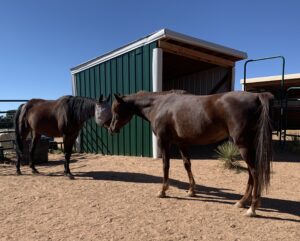
In October we lost my mare Jazzie, who was just shy of her 19th birthday. It has been emotionally tough to live without her huge presence in our lives. She is irreplaceable, and yet I draw some comfort knowing she is watching over us and will continue to be a powerful influence.
I adopted a young grade Arabian mare, whom I named Red (or she named herself), four years old. She came from a wonderful rehab and rescue center in Santa Fe, which provided a loving respite from previous traumatic experiences.
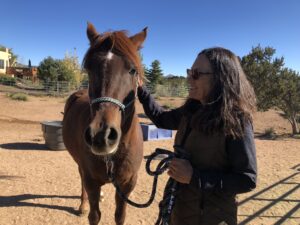 Red isn’t a replacement, she is her own horse. She is young and curious about everything, and especially her interactions with humans and her training. She loves her training. What I’m seeing in her is that everything is an adventure. While her first years were fraught with uncertainty, fear and mistreatment, when she didn’t want anyone to catch or touch her, she has now landed somewhere where everyone listens to her and she wants to listen.
Red isn’t a replacement, she is her own horse. She is young and curious about everything, and especially her interactions with humans and her training. She loves her training. What I’m seeing in her is that everything is an adventure. While her first years were fraught with uncertainty, fear and mistreatment, when she didn’t want anyone to catch or touch her, she has now landed somewhere where everyone listens to her and she wants to listen.
The loss of Jazzie and the introduction of Red are changing my teaching. I relied so heavily on Jazzie’s intelligence in terms of teaching; her sixth sense as far as knowing what a student needed to know, or even what was needed in a teaching video. Now I seek to find out what innate intelligence is available in the new herd. I come into awareness of their changing relationships, and how they relied on each other for certain strengths and roles. They have reorganized since Jazzie’s passing. They make it work.
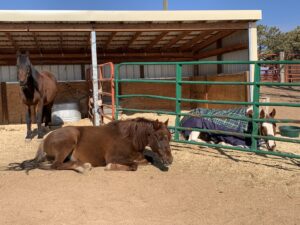
This experience with Red is also showing me the interface between training and bodywork. I can see that when Red doesn’t respond to something I want her to do, it has been when she has felt unable to do it. She has either frozen in place or felt her body imbalance stick her somewhere that makes it impossible to turn or lower her head, or turn to the right.
It has been a learning process for me, asking questions, where is she stuck, where is the brace in her body? And then going in and softening, loosening, however that looks. Some days have been all about that, softening, finding the connection in the body so it could ease its defensive posture. How many defensive postures could a young mare hold?
Red has come to the place where she can position her body where she wants me to work. This is something I love to see in horses I work with, as it demonstrates a recognition of what I can offer and their connection to it, at the same time, recognizing that they can use the stimulus given and self-correct.
Primarily with everything we’re doing, it takes the time it takes. If the resistance isn’t removed then there is nowhere to go, there is no pushing through it to the other side. If there is no physical resistance there may sometimes be emotional resistance because an avoidance habit was formed in the past or she was taught something that wasn’t useful. I need to manage my energy so as not fall into Red’s stuff, ask in the right way, to remind her of what she is capable of.
This is not a horse that you would put the traditional “30 days” on and then think all was good to go. Probably that doesn’t work for 99% of the horses out there, but given economics and the way people perceive training and horses, it’s a norm, though not a very sustainable one.
I’m seeing more bridges between bodywork and training. We work with the nervous system in each of these practices, if we do it right. Where the horse is excitable (flight/fright), we calm it. Where it is too sluggish (rest/relaxation), we enliven it. With good work on the nervous system, a horse can usually self-regulate and not immediately go into high alert and react over everything.
I have been fortunate enough to have a few “horses of a lifetime,” not just one. Each one has different gifts and teaches me something new. When they feel comfortable in their home, they feel heard and seen, then they will show their gifts. Many horses go through life without showing their true gifts to people, because there are many people who won’t see the gifts even if hit in the face with them. Horses don’t “throw pearls before swine,” as the saying goes. Some of mine have been horses of a lifetime in spite of me and my agendas at the time. I listen better now. I’m not so driven.
What is the purpose of this message, you might ask? Is it about the new horse, mourning the loss of a deceased horse, training or bodywork?
It’s about everything. It’s about the changes that we make to accommodate the new, while mourning the loss of the old. It’s about the evolution of body and training, and how training is absorbed and perceived by each individual being.
I’m reminded of how Jazzie would raised her leg and made sure a student was holding it correctly and compressing into the perfect place that would initiate change for her. I will remember how she positioned herself so that the student or I would get the hint of where to work next. And her incredible intuition with bodywork in the saddle comes to me each time I climb in the saddle, creating a valuable change for both horse and rider.
Jazzie was very good at what she did; she was patient and impatient simultaneously, and perhaps so because on some level, she knew she didn’t have a long time on this earth. Humans needed to get it right quickly. Such a well-adjusted, sensible mare was valuable for those who were less well-adjusted and sensible and pure joy for everyone else.
I work with performance horses, race horses, horses in training, geriatric horses, injured horses, traumatized horses, pregnant mares and newborn foals, horses who are getting ready to pass from this world and those passed. I work with the people who love them. They are all on different paths, at their own tempos.
With the dawning of the new year, I feel a shift in the work I do. I may work with deepening the links between people and horses, or bodywork as a more integral support for training. Very often what isn’t working for a horse isn’t working for the people either.
My wish is that you will deepen your experience in 2023, either on your own, in practice, with or without horses, or in classes. Whatever moves you. This quiet, cold time of winter (and not for those in the southern hemisphere, of course!) is open to introspection and weaving together a new beginning, not a replacement for what was, but a lengthening of “being” into the coming months.



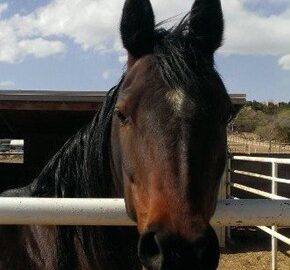
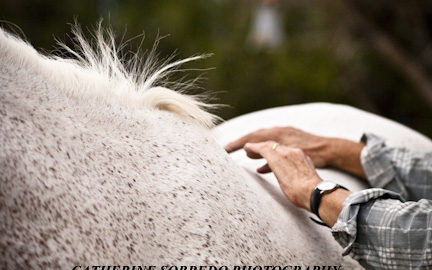
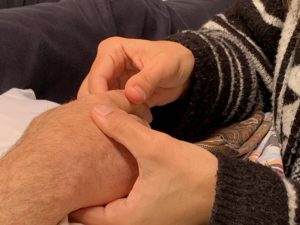 A healing journey is specific, non-specific, historic, full of layers and wondrous avenues of enlightenment. The layers that developed first – en utero, at birth – will be deepest in the body, and the last ones to heal. Perhaps we can go farther back than that – generations that will heal last, if at all in this lifetime. The healing journey is one of seeking to unravel those layers in the body’s time, as it has a time of its own. Seeking self-correction.
A healing journey is specific, non-specific, historic, full of layers and wondrous avenues of enlightenment. The layers that developed first – en utero, at birth – will be deepest in the body, and the last ones to heal. Perhaps we can go farther back than that – generations that will heal last, if at all in this lifetime. The healing journey is one of seeking to unravel those layers in the body’s time, as it has a time of its own. Seeking self-correction.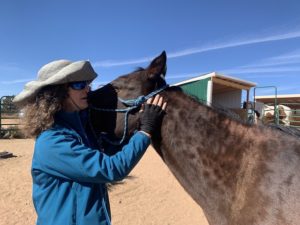 When I talk about injury, that injury could be internal or external, it could be musculoskeletal, visceral, neurological, circulatory, emotional, psychological, psychic…
When I talk about injury, that injury could be internal or external, it could be musculoskeletal, visceral, neurological, circulatory, emotional, psychological, psychic…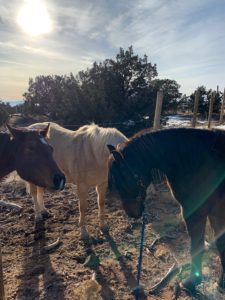
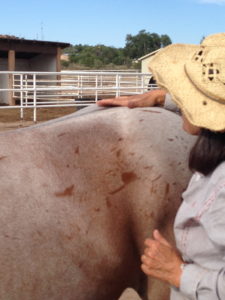 Horses demonstrate to us repetitive stress in so many ways. They are subjected to repetitive activities – training, carrying people with unaddressed repetitive stress and compensatory patterns, saddles, bridles, other tack, trailering, abuse, repetitive behaviors.
Horses demonstrate to us repetitive stress in so many ways. They are subjected to repetitive activities – training, carrying people with unaddressed repetitive stress and compensatory patterns, saddles, bridles, other tack, trailering, abuse, repetitive behaviors.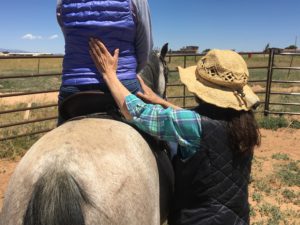 to take place slowly, addressing each layer as an individual, peeling them back as the body is able to address them.
to take place slowly, addressing each layer as an individual, peeling them back as the body is able to address them.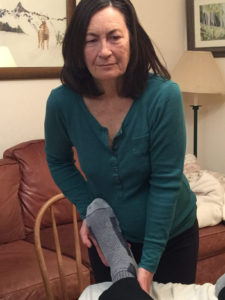 it is those things, the compensation is coming from a lot of places and the body wants to be addressed as a whole. Not only will it show its compensation, it will show its strengths – where it can move and where it is light and receptive.
it is those things, the compensation is coming from a lot of places and the body wants to be addressed as a whole. Not only will it show its compensation, it will show its strengths – where it can move and where it is light and receptive.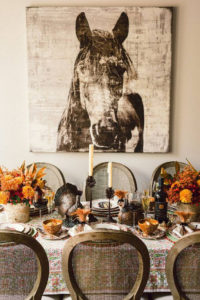
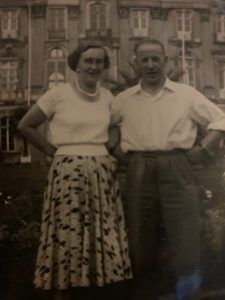

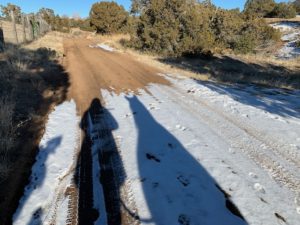
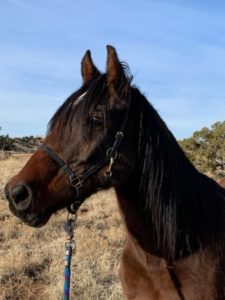
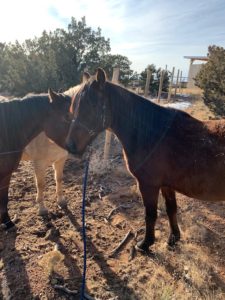
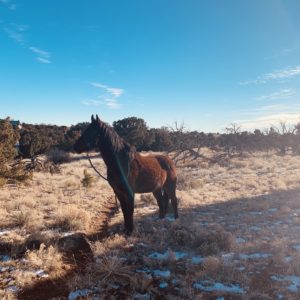
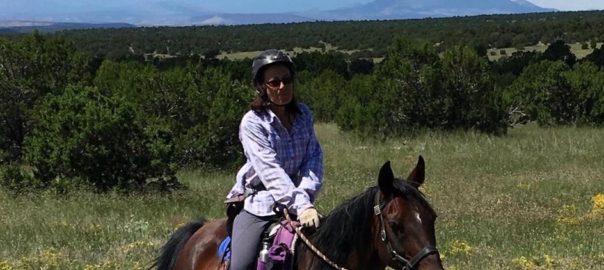
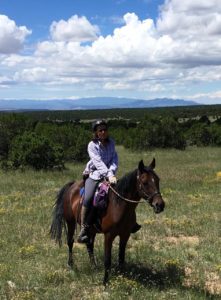
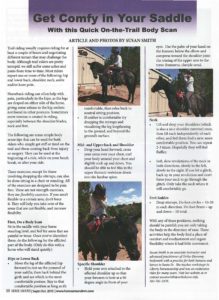
 All of us – horse and human – hold tension in our bodies and we also have areas that just don’t speak. We have places that don’t work as well as others. My right leg can get funky in the hip socket, for example. I could sit up there and worry about what a terrible rider I am and I shouldn’t ride because I’m not always symmetrical and blah blah blah, but if I focus on all the dysfunction, then I am missing what my body can do, and how it can support the areas that aren’t working quite so well. My horse has stuff going on in her hips also. I focus on the healing available in her body. And guess what? Even though she has that stuff, she is a beautiful mover. I sit on her, and I feel each part of me and her, and focus on the parts that work really well while holding an awareness of what I’d like to have shift.
All of us – horse and human – hold tension in our bodies and we also have areas that just don’t speak. We have places that don’t work as well as others. My right leg can get funky in the hip socket, for example. I could sit up there and worry about what a terrible rider I am and I shouldn’t ride because I’m not always symmetrical and blah blah blah, but if I focus on all the dysfunction, then I am missing what my body can do, and how it can support the areas that aren’t working quite so well. My horse has stuff going on in her hips also. I focus on the healing available in her body. And guess what? Even though she has that stuff, she is a beautiful mover. I sit on her, and I feel each part of me and her, and focus on the parts that work really well while holding an awareness of what I’d like to have shift.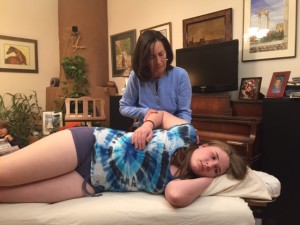 Certainly, work can be done on some of these issues independently of the horse/rider relationship, and I do that in many cases where a person may need individual table work ahead of a horse/rider session, or the horse needs to receive an entire session on his own. If someone has major back trouble, I’m going to work on that, and same with the horse. But once the bodies are free of great inhibition, we can bring them together and see where they can strengthen and enhance each other, and bring space into the relationship that may have been restricted before.
Certainly, work can be done on some of these issues independently of the horse/rider relationship, and I do that in many cases where a person may need individual table work ahead of a horse/rider session, or the horse needs to receive an entire session on his own. If someone has major back trouble, I’m going to work on that, and same with the horse. But once the bodies are free of great inhibition, we can bring them together and see where they can strengthen and enhance each other, and bring space into the relationship that may have been restricted before.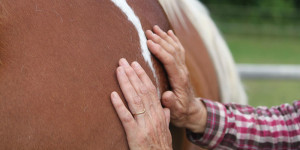 ways of beginning this work. While grooming your horse you can feel along the spine for any irregularities. If you don’t know anatomy, it’s helpful to get a simple equine anatomy book – and a human one while you’re at it! Learn where the bones are. Everything else is related to or attached to the bones in some way, so it’s a great place to start.
ways of beginning this work. While grooming your horse you can feel along the spine for any irregularities. If you don’t know anatomy, it’s helpful to get a simple equine anatomy book – and a human one while you’re at it! Learn where the bones are. Everything else is related to or attached to the bones in some way, so it’s a great place to start.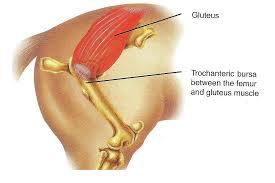
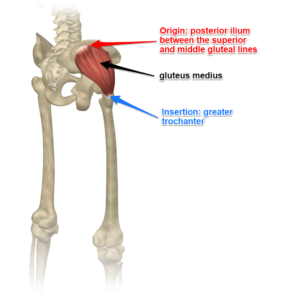
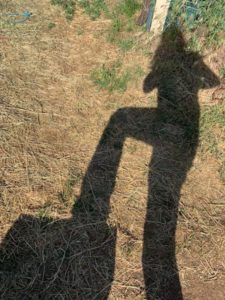 After that I may do a little bit of bodywork on areas I see are not working so well on my horse, and stretch out myself. You can apply your own exercises, such as qi gong, yoga, Feldenkrais, etc. and in Ortho-Bionomy© we have a lot of self-care exercises for people and ones you can do for your horse. Some of them I have adapted to use in the saddle as well.
After that I may do a little bit of bodywork on areas I see are not working so well on my horse, and stretch out myself. You can apply your own exercises, such as qi gong, yoga, Feldenkrais, etc. and in Ortho-Bionomy© we have a lot of self-care exercises for people and ones you can do for your horse. Some of them I have adapted to use in the saddle as well.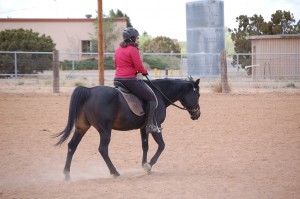 Much thought has been given over centuries to how to ride efficiently and so as to bring out the best in the horse and rider. With the Mounted Body Balance™ approach, an older horse can move better than he or she ever has and so can her rider. Life isn’t static so we can’t guarantee that any of us are not going to have some physical challenges, but there is a lot we can solve and make more comfortable with this type of work. A horse may be able to help you with your body issues without impairing his/her own stride or balance. Of course, aging will limit what you can do but why not try to do what you love comfortably for as long as you can? As a physical therapist friend of mine says, “I’m here to help you be able to do what you love for longer.”
Much thought has been given over centuries to how to ride efficiently and so as to bring out the best in the horse and rider. With the Mounted Body Balance™ approach, an older horse can move better than he or she ever has and so can her rider. Life isn’t static so we can’t guarantee that any of us are not going to have some physical challenges, but there is a lot we can solve and make more comfortable with this type of work. A horse may be able to help you with your body issues without impairing his/her own stride or balance. Of course, aging will limit what you can do but why not try to do what you love comfortably for as long as you can? As a physical therapist friend of mine says, “I’m here to help you be able to do what you love for longer.”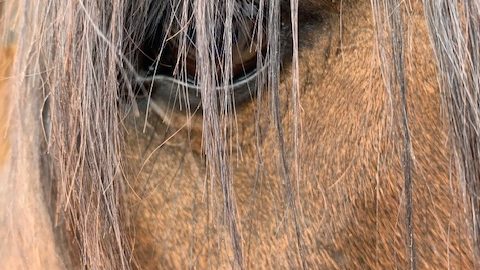
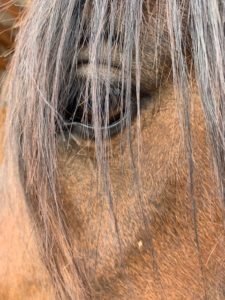
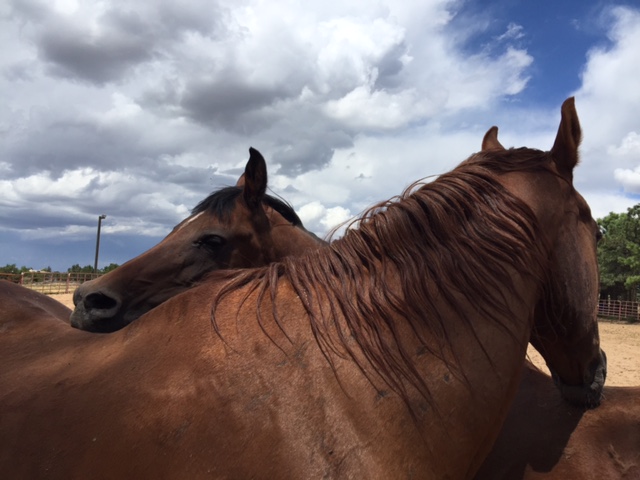
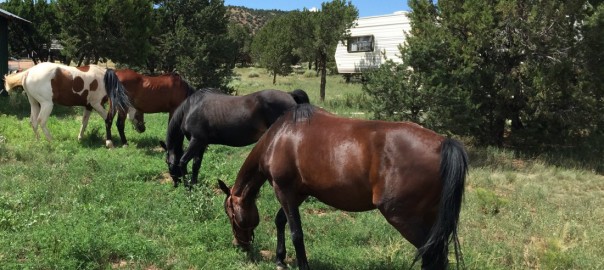
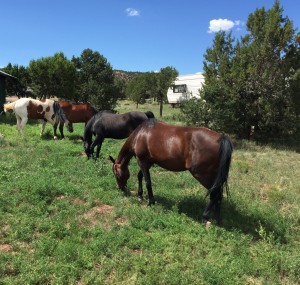
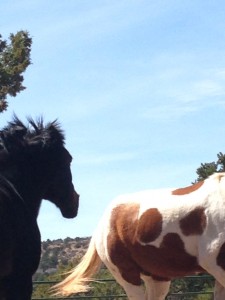

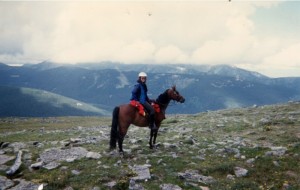
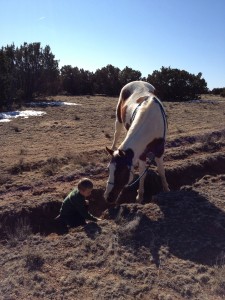
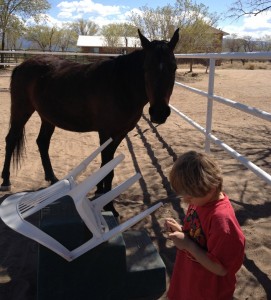
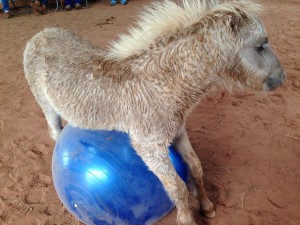
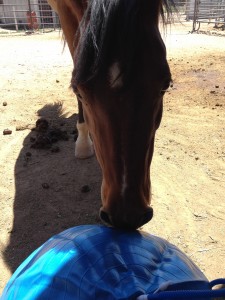
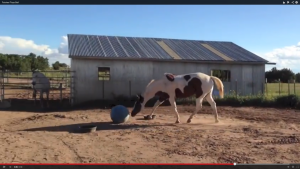
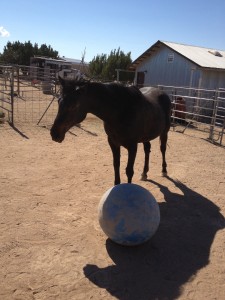
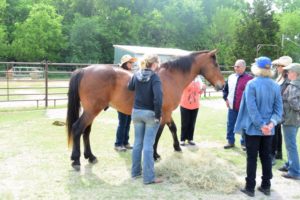
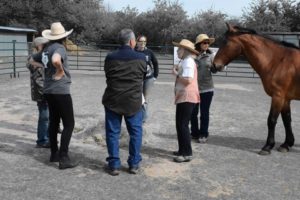
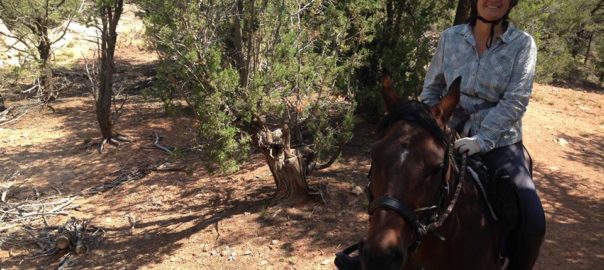
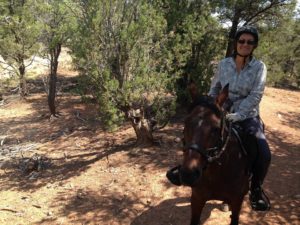
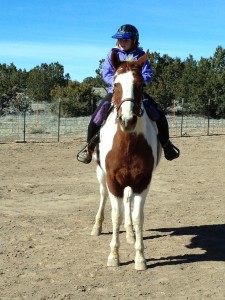
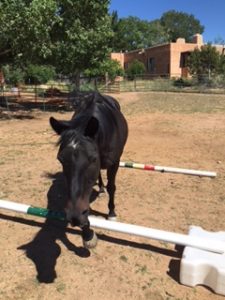
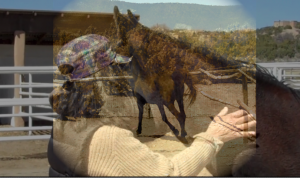
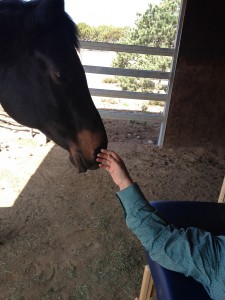
![[Catherine Sobredo Photography]](https://susansmithsantafe.com/wp-content/uploads/2012/08/imgp2369-edit-199x300.jpg)